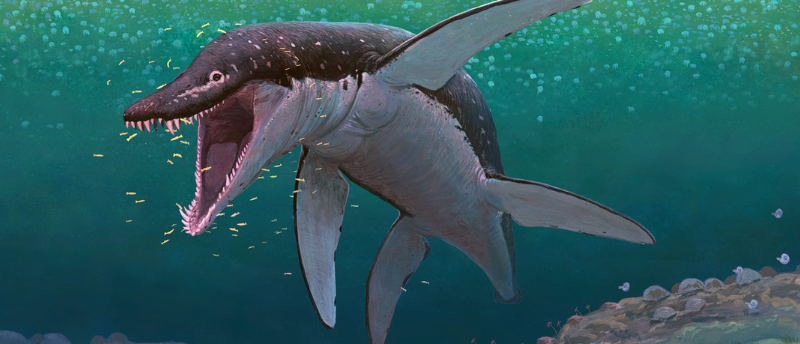Monsters of the deep: remains reveal oldest-known mega-predatory marine reptile

With 1.3-meter-long jaws lined with large teeth, the oldest known mega-predatory marine reptile has been identified… and it’s part of the clade Thalassophonea, or ‘sea murderers’.
40 years after their discovery in Lorraine (northeastern France), the fossils of a 170-million-year-old pliosaur have been analyzed by a collaboration of paleontologists from Naturkunde-Museum Bielefeld (Germany), the Institute of Paleobiology of the Polish Academy of Sciences (Warsaw, Poland), the Natural History Museum (Luxembourg City, Luxembourg) and the Museum of Evolution at Uppsala University (Sweden), revealing a new pliosaur genus: Lorrainosaurus. Pliosaurs lived during the early Middle Jurassic period and are closely related to long-necked plesiosaurs.
Unlike these more famous relatives, pliosaurs have short necks and huge skulls. First appearing over 200 million years ago, they were minor players in the marine ecosystem before suddenly becoming apex predators. The current study highlighted how this predatory shift occurred following feeding-niche differentiation and the decline of other marine predators 170 million years ago, which led to Lorrainosaurus ruling the oceans for 80 million years. The team carried out phylogenetic and multivariate analyses, relying on data previously gathered about other pliosaurid plesiosaurs to compare and characterize this new pliosaur genus.
“Our identification of Lorrainosaurus as one of the earliest mega-predatory pliosaurs demonstrates that these creatures emerged immediately after a landmark restructuring of marine predator ecosystems across the Early-to-Middle Jurassic boundary, some 175 to 171 million years ago. This event profoundly affected many marine reptile groups and brought mega-predatory pliosaurids to dominance over ‘fish-like’ ichthyosaurs, ancient marine crocodile relatives, and other large-bodied predatory plesiosaurs,” explained Daniel Madzia (Polish Academy of Sciences), co-author of the study.
This study re-evaluated the fossils, donated to the Natural History Museum in Luxembourg, finding that the predatory reign of the pliosaur must have started earlier than previously thought and was due to local ecological shifts affecting marine life.
“Lorrainosaurus is thus a critical addition to our knowledge of ancient marine reptiles from a time in the Age of Dinosaurs that has as yet been incompletely understood”, said co-author Benjamin Kear.





